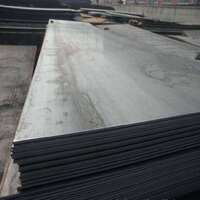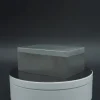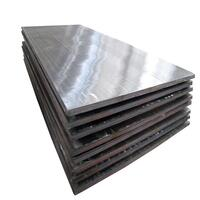1. Introduction
When you hear ‘metal clad,’ you might picture a simple metal shed or industrial warehouse. But in today’s architectural world, metal clad has evolved into a sophisticated design language—blending engineering precision with visual drama. Far beyond basic corrugated steel, modern metal clad systems use advanced clad metals like titanium-clad panels, copper-nickel alloys, and aluminum-clad stainless steel to meet exacting performance and aesthetic demands.

From the rusted elegance of a corten steel facade to the sleek minimalism of a vertical standing seam metal siding installation, metal clad is no longer just functional—it’s foundational to cutting-edge building design. Let’s dive into how these niche applications are reshaping architecture.
2. What Does ‘Metal Clad’ Really Mean?
At its core, the metal clad meaning refers to a composite material where one metal is bonded—often through roll bonding, explosion bonding, or electroplating—to another to combine their best properties. This is also known as clad metal meaning: a layered structure that delivers corrosion resistance, strength, thermal performance, or visual appeal unattainable with a single metal.
For example, aluminum clad steel wire offers the conductivity of aluminum with the tensile strength of steel. Similarly, stainless clad aluminum combines the lightweight nature of aluminum with the hygiene and durability of stainless steel—ideal for food processing or pharmaceutical facilities.
3. High-Performance Metal Clad Facades in Architecture
Architects now specify metal clad wall systems not just for looks, but for performance under extreme conditions. A standout example is the use of corten steel siding in coastal or high-humidity environments. Unlike traditional steel, corten steel plate forms a stable rust-like patina that acts as a protective layer—eliminating the need for painting and reducing long-term maintenance.

But corten isn’t the only star. Zinc metal siding and zinc clad roof systems are prized for their self-healing oxide layer and 80+ year lifespan. Meanwhile, copper siding develops a distinctive green patina over time, adding historical character to modern builds.
- Corten steel siding cost is higher upfront but often justified by lifecycle savings.
- Zinc clad dormers and pac clad column covers offer both structural integrity and refined detailing.
- Standing seam facade systems like pac clad hwp or colorbond standing seam provide seamless, watertight exteriors with clean lines.
4. Beyond Aesthetics: Functional Metal Clad Systems
Metal clad isn’t just skin-deep. In industrial and infrastructure projects, clad metals serve critical roles. Aluminum clad pipe insulation, for instance, protects pipelines from thermal loss and corrosion in petrochemical plants. Similarly, metal clad electrical wire (often called MC cable) is widely used in commercial buildings for its fire resistance and mechanical protection—yes, even in Pennsylvania, where code compliance is strict.
In high-tech settings, alloy clad materials like 2024-T3 clad aluminum or 7075-T6 clad are used in aerospace and defense for their strength-to-weight ratios. Even boiler plate steel can be upgraded with chrome carbide overlay for extreme wear resistance in mining equipment.
5. Residential Innovation: The Rise of the Metal Clad House

The metal clad house is gaining traction among eco-conscious homeowners and minimalist designers. Using exterior corrugated metal siding or vertical standing seam metal siding, these homes achieve striking visual impact while offering superior durability against fire, pests, and storms.
Steel clad houses often feature pac clad coping and pac clad standing seam roofs for a monolithic appearance. Others opt for a mix—like a corten steel facade paired with aluminum diamond tread plate accents or stainless steel plate base elements.
And it’s not just about looks: metal weatherboard and metal clad siding provide excellent thermal performance when combined with proper insulation. Plus, materials like aluminum 5052 sheet or 6061-T6 aluminum plate offer recyclability without sacrificing strength.
6. Material Selection: Choosing the Right Clad Metal Type
With so many options—from brass plate and bronze plate to inconel 625 plate and titanium alloy plate—selecting the right clad metal type depends on environment, budget, and design intent.
For marine environments, cupro nickel clad or copper nickel clad resists saltwater corrosion. In high-heat applications, 316L stainless steel plate or 904L stainless steel plate maintains integrity. And for decorative nameplates or interior accents, brass plates for engraving or nickel silver plate add luxury.
Don’t overlook finishes: electroless nickel, chromium electroplating, or even electroplating gold can enhance both function and flair. Perforated plate or diamond plate steel sheets add texture and light play to facades while maintaining structural role.
7. Conclusion
Metal clad has moved far beyond its utilitarian roots. Today, clad metals are at the heart of architectural innovation—enabling buildings that are not only beautiful but resilient, sustainable, and engineered for the future. Whether it’s a zinc facade shimmering in the rain, a steel clad building standing tall in an urban skyline, or a quiet metal clad house nestled in the woods, the possibilities are as diverse as the alloys themselves. As material science advances, expect even more creative—and high-performing—uses of metal clad in the built environment.
Our Website founded on October 17, 2012, is a high-tech enterprise committed to the research and development, production, processing, sales and technical services of ceramic relative materials such as Metal. Our products includes but not limited to Boron Carbide Ceramic Products, Boron Nitride Ceramic Products, Silicon Carbide Ceramic Products, Silicon Nitride Ceramic Products, Zirconium Dioxide Ceramic Products, etc. If you are interested, please feel free to contact us.
